The fermented soybean paste miso is a must-have in the Japanese diet. It offers many nutritional benefits, such as strengthening your gut health, improving your heart, and more!
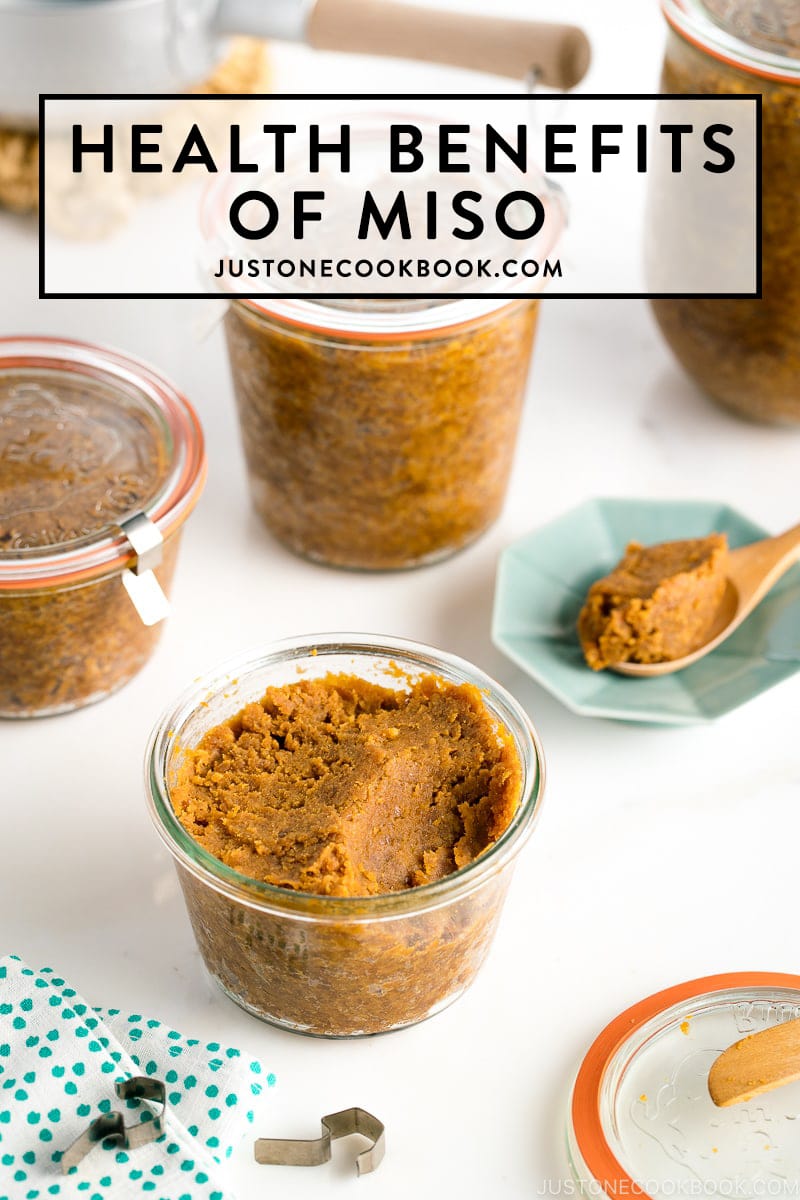
Miso, the funky nutrient-rich paste, is vital in Washoku (Japanese food)Japanese cuisine. Most may already be familiar with miso soup, with chunks of tofu and green onions. But beyond the delicious taste, have you ever wondered about the health benefits of this salty-savory condiment?
Miso has been widely recognized as a fermented food as one of the top superfoods for gut health. There is a proverb「味噌は医者いらず」(eat miso and you won’t need to see a doctor), the Japanese solution to “an apple a day keeps the doctor away.” Incredibly rich in amino acids, vitamins, and minerals, miso packs a serious nutritional punch.
So what is it, and how do the Japanese enjoy it as part of a healthy diet? Let’s examine its unique properties and how to reap the nutrients.
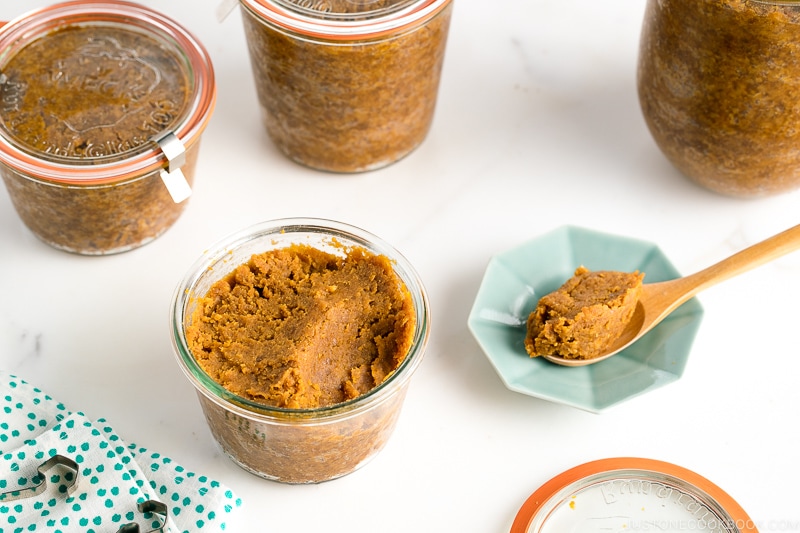
An Overview: What is Miso
Miso (味噌) is fermented soybean paste. It’s made by fermenting mashed soybeans with salt and a koji culture (麹, Aspergillus oryzae, the fungus used to make sake, shochu, and rice vinegar). Traditionally, the fermentation takes place in large cedarwood kegs.
Besides soybeans, other beans and grains such as wheat, barley, millet, and azuki can be used. Some producers have experimented with non-traditional ingredients such as edamame, chickpeas, quinoa, and other beans and grains.
The fermentation process can last from six months to several years. As a living food, it will continue to ferment if left in a cool environment, resulting in a deep and mellow flavor. Most commercial varieties rely on accelerated fermentation, which can last weeks to a few months and usually occurs in plastic or stainless steel vats. Some are pasteurized to extend their shelf life, but as they contain no probiotics, you should avoid them.
You may have heard of white miso/shiro miso, a pale yellow color with a short fermentation, and red miso, a dark-colored miso due to its long fermentation.
According to the Japan Miso Promotion Board, there are over 1,300 kinds! It varies by region, ingredients, color, aroma, and taste, like wine and cheese. So, each Japanese household would make a slightly different miso soup than his/her neighbor.
You will notice the salty and savory flavors shine through if you taste it. It’s an umami booster that’s not only for miso soup but can be used as a secret ingredient in stews, curries, soups, and stir-fries.
Health Benefits of Miso
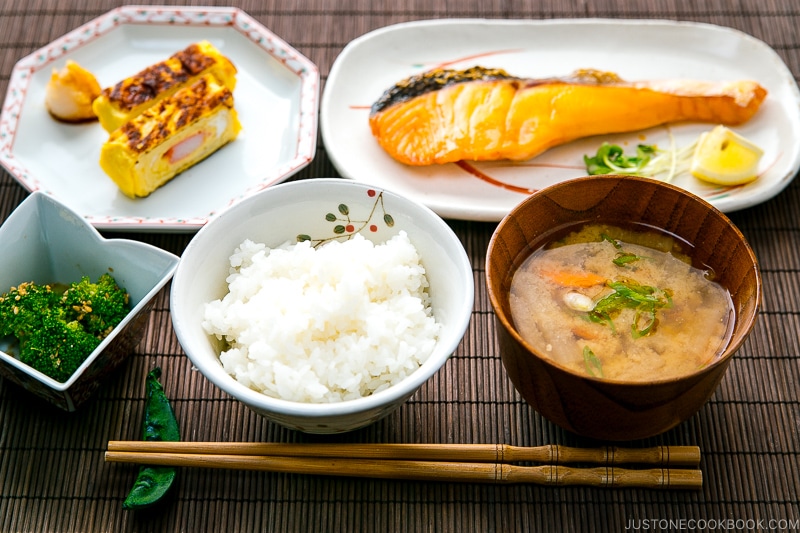
Miso has long been touted as a healthy food. Traditionally, the Japanese drink a bowl of miso soup three times a day as part of the Ichiju Sansai meal to stimulate their appetite.
Numerous studies on the health properties of drinking miso soup have found short- and long-term potential benefits. While these studies are not definitive and vary across race, age, ethnicity, gender, and diet, the benefits may include:
- improved digestive health, reducing gas, diarrhea, constipation, and bloating
- decreased cholesterol levels
- lowered risk of some cancers
- reduced risk of cardiovascular diseases and promotes heart health
- potential prevention of type 2 diabetes
- eased menopausal symptoms
- improved skin conditions
Improves digestive health
As a fermented food product, it is a probiotic like yogurt, sauerkraut, kombucha, and kimchi. Probiotics contain “good” bacteria, and consuming the right kind of bacteria can help reduce inflammation, aid healthy digestion, and support a healthy immune system. Simply said, miso helps improve your body’s ability to digest and absorb food!
Decreases cholesterol levels
There are animal studies that show that it may help reduce levels of LDL cholesterol (“bad” cholesterol, compared to HDL “good” cholesterol). Low cholesterol levels lower the risk of heart disease and stroke.
Lowers risks of some cancers
Miso may be beneficial for preventing radiation injury and the progression of cancerous tumors. As miso is rich in antioxidants, this helps guard your body’s cells against damage from free radicals, a type of cell damage linked to cancer. Animal and human studies report that consuming it may reduce the risk of lung, colon, stomach, and breast cancers.
Reduces risk of cardiovascular diseases and promotes health
Miso soup may reduce the risk of death from heart disease. One study showed that higher levels of isoflavones (a nutritional supplement found in the legume family) correlated with a lower risk of strokes and heart attacks in some Japanese women.
May prevent type 2 diabetes
Some studies show that fermented soy products such as miso may help delay the progression of type 2 diabetes.
Eases menopausal symptoms
Soybeans provide a range of health benefits for women, including alleviating hot flashes in menopausal women. Soy food products are also associated with optimal bone health and help avoid osteoporosis.
Improves skin conditions
Miso is rich in antioxidants such as vitamin E, isoflavones, and saponins. Antioxidants help protect the body from free radicals that can cause signs of aging and boost overall health. It also contains linoleic acid, an essential fatty acid that helps your skin stay soft and pigment-free.
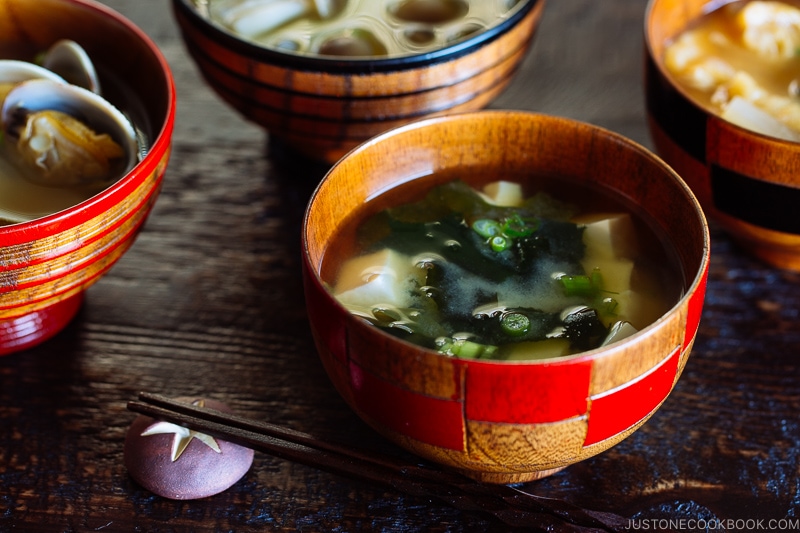
What about the Salt in Miso?
While it has a high salt content, the Japanese consume it regularly. Recent studies have shown that miso does not appear to affect our cardiovascular system in the way that other high-sodium foods can.
In addition, you don’t need a large spoonful to make miso soup or as a seasoning in stir-fries. A little goes a long way. The flavor in miso soup shouldn’t be gut-punching; it should be subtle enough to notice its existence without being overwhelming.
To decrease the body’s absorption of sodium, you can add vegetables high in potassium, such as potatoes, spinach, other leafy vegetables, wakame seaweed, and bamboo shoots. You could also decrease the amount you add to the pot and load it with more vegetables.
Another tip is to drink green tea to counterbalance the salt intake.
While you won’t be able to absorb all the benefits of just a bowl of soup, try incorporating it into your daily meal. Who knows, it may become your comfort food! You can easily adjust the ingredients to your preferences (any vegetable and protein works) and even prep it in advance for instant miso soup.
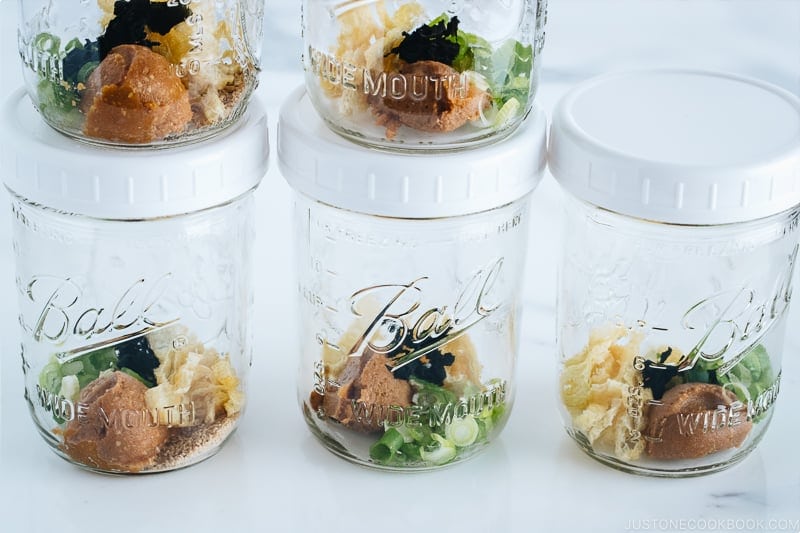
How to Reap the Benefits of Miso
Ready to take in all the nutritional benefits of miso? Here are a few tips to maximize its potential!
- Buy quality miso! Taste it as is; if you like it plain, it should be good!
- Check the ingredient list for foreign additions such as alcohol, stabilizers, or other additives. The ingredient list should be pretty simple.
- Avoid high heat when cooking with it, as it will kill off the good bacteria. When making miso soup, turn off the heat and dissolve (using a muddler like this will help avoid clumps).
- Rather than making a big batch of miso soup and repeatedly reheating the pot, prepare it for each meal. While this may seem tedious, the aroma is delicate and will disappear with heat.
- To consume the benefits, drink one bowl of miso soup at each meal frequently instead of drinking large amounts in a single meal.
- When making miso soup from scratch, also prep homemade dashi! Instant dashi packets are convenient but contain large amounts of salt and other additives.
- As advocated by medical practitioners, there is a gut clock to our body’s mobility system. So it’s best to enjoy it during the day, the earlier the better.
- Think outside of the realm of miso soup! Use it in marinades, dressings, glazes, dipping sauces, and more.

On the Probiotics of Miso
As miso is a probiotic, heating it will kill off the lactic acid bacteria (AKA the “good bacteria”). But does that mean cooked miso is depleted of its nutritional benefits?
Not quite. First, the Japanese do not treat miso as merely a source of probiotics. Instead, we use it more as an ingredient and flavoring agent. Think miso soup and marinades for meat and fish, which gets cooked. As mentioned above, miso soup is chock full of protein, fiber, and minerals unaffected by heat. For gut health, the Japanese rely on other sources such as tsukemono, natto and non-Japanese foods such as yogurt, cheese, and kimchi (thanks to the K-Pop boom, kimchi is widely available that you can find it at any supermarket or convenience store).
To avoid cooking off the lactic acid when making miso soup, you can make sure to turn off the heat and cool the pot until 50C/122F – 70C/158F (the probiotics will die above 70C/158F). But most Japanese people don’t take an exact temperature reading and turn off the heat when adding miso to the pot.
Unfortunately, scorching hot miso soup is pretty rampant, especially in restaurants. However, it should be understood that maintaining low-temperature soup could lead to food safety issues. So, to reap the probiotic benefits, use it in salad dressing, dipping sauces, or eat it plain!
Substitute for Miso Paste
In terms of overall composition, taste, and health benefits, there is truly no good substitute for miso. Fermented pastes are from other Asian countries, but the ingredients and culinary uses vastly differ.
Some Western websites suggest soy sauce or tahini (sesame paste) as a substitute. However, these alternatives should be considered a last resort if used minimally as a flavoring booster. Otherwise, they don’t match miso’s pure flavor and benefits.
Perhaps the most similar ingredient is doenjang (된장), fermented Korean soybean paste. It’s like a cousin to miso. The difference is that doenjang is made with soybeans and salt, without the koji starter. The resulting flavor profile is sharper and stronger. The culinary uses differ, where doenjang complements the hearty chili-spiced Korean cuisine. Korean miso soup is called doenjang woofwhich may also have garlic or gochujang.
You could substitute doenjang for miso in a pinch, but as mentioned above, it is generally not recommended.
Concern about Soy?
As soy is one of the top food allergens, some people with soy allergy may have concerns about miso consumption. Despite the controversy over unfermented soy, many studies have concluded that fermented soy products like miso and natto are safe and beneficial for one’s health. The fermentation process has proven to deactivate antinutrients and lessen any adverse effects that soy might have.
In Japan and many other Asian countries, soy has been consumed since ancient times and remains a staple in the diet. However, everyone’s health is different and is highly influenced by lifestyle, environment, genetics, and general diet (read Medical News and Harvard Public Health and Dr.Weil’s Rethinking Soy).
Our advice is to enjoy your food, even the healthiest food like miso, in moderation. Go with a non-GMO, organic choice if possible.
If you are sensitive to histamine, there are non-soy options using chickpeas, azuki beans, barley, millet, brown rice, and other beans and grains. Do check the label before purchasing. You can also consider making miso with non-soy ingredients.
Make Your Miso
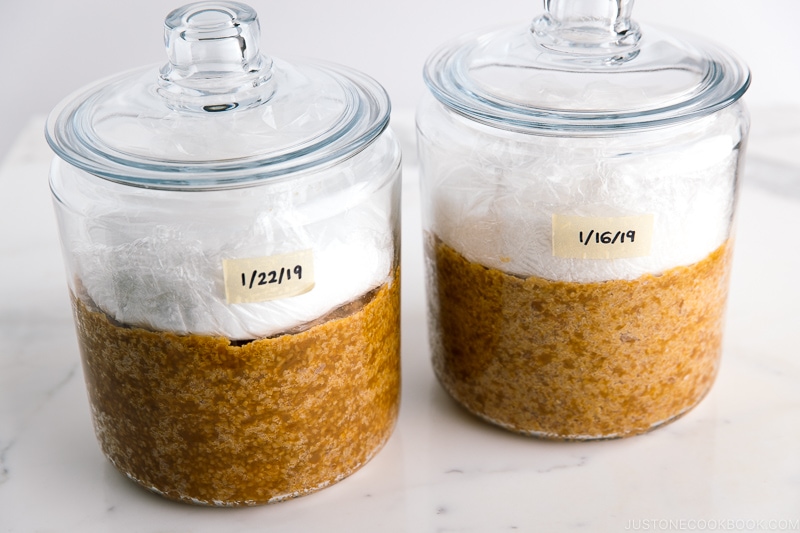
Interested in making miso? Check out Nami’s recipe for homemade miso. All you need are 4 ingredients and patience!
What are some of your favorite ways of enjoying miso? Please share in the comment box below!

